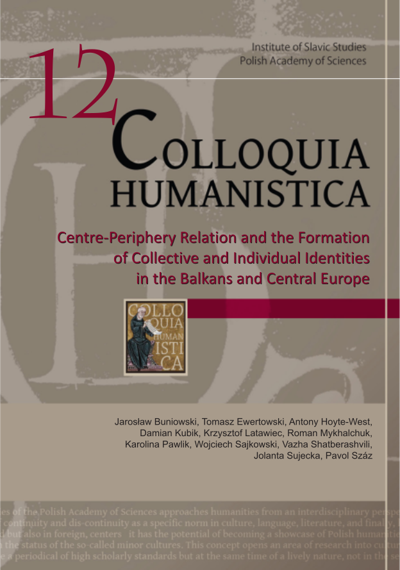Cultural Policy of the Democratic Republic of Georgia (1918–1921)
Cultural Policy of the Democratic Republic of Georgia (1918–1921)
Author(s): Vazha ShatberashviliSubject(s): Cultural history, Political history, Pre-WW I & WW I (1900 -1919), Interwar Period (1920 - 1939)
Published by: Instytut Slawistyki Polskiej Akademii Nauk
Keywords: Democratic Republic of Georgia; culture; policy; cultural policy model;
Summary/Abstract: Culture, cultural heritage is a kind of text allowing us to “read” about the identity and genetic code of a nation, or, in other words, providing a key to understanding the “personality” and mindset of the nation and, at the same time, creating a path to the future. Therefore, protecting and developing culture to ensure cultural continuity is an essential prerequisite for ensuring the existence and progress of each nation and country – this is the firmly held axiom on which the cultural policy of states is based. This becomes all the more relevant for Georgia, which, due to its unique location and geopolitical, cultural and strategic importance, already in the distant past embraced the cultural achievements of the eastern and western civilisations and succeeded in creating its uniquely distinct and diverse national culture, thus putting itself firmly on the map of world culture. Of utmost importance in this process is the brief transitional period of existence of the Democratic Republic of Georgia (1918–1921), during which the country actively set about defining and implementing state cultural policy and establishing a national administration system in this sphere. The article argues that the state vision of culture or, in modern terms, cultural policy corresponding to the political system then in place, existed within the aforesaid time frame long before the world, including modern Georgia, saw the need to develop a cultural policy. Considering the country’s legislative framework, the institutional administration system of the cultural sphere, the dynamics of cultural life and its peculiarities, and internationally recognised concepts and models, we tentatively define the cultural policy model of the Democratic Republic of Georgia in the last part of the article. We liken it, to a certain extent, to the Architect State model as developed by Harry Hillman Chartrand and Claire McCaughey. The bureaucratic-educational concept model offered by Milena Dragićević-Šešić and Branimir Stoykovich also proved to be of interest. The international models put forward by the aforesaid scholars undoubtedly differ from the historically existing ktitoric/protective model of Georgian culture, as well as from the protective model established by the Democratic Republic of Georgia. There are, however, some common features between them: centralised patronage/support of culture by the state, non-intervention in the content of art; considering culture and art as one of the precursors to the social wellbeing of society; highlighting the priority importance of the educational function of culture and art. With due regard for the foregoing, we have tentatively designated the cultural policy model applied by the Democratic Republic of Georgia as the educational model of the Architect State.
Journal: Colloquia Humanistica
- Issue Year: 2023
- Issue No: 12
- Page Range: 1-18
- Page Count: 18
- Language: English

